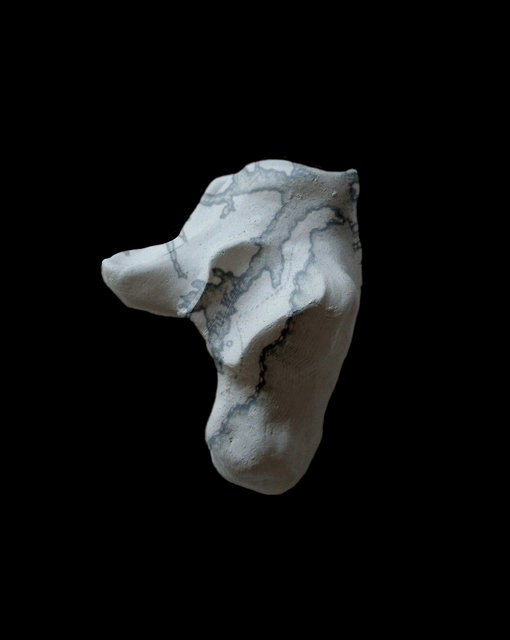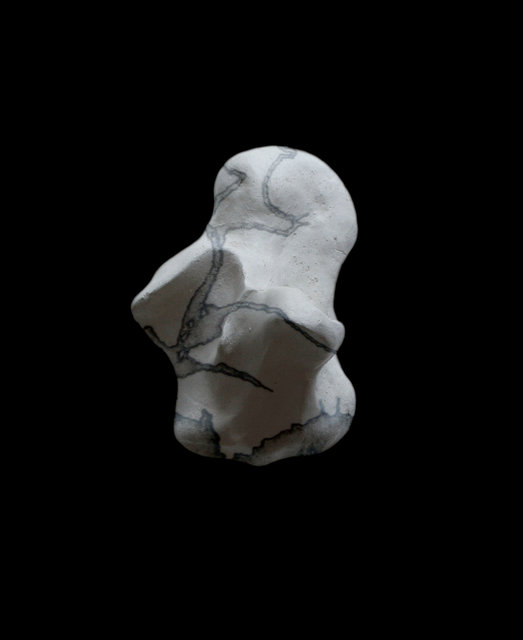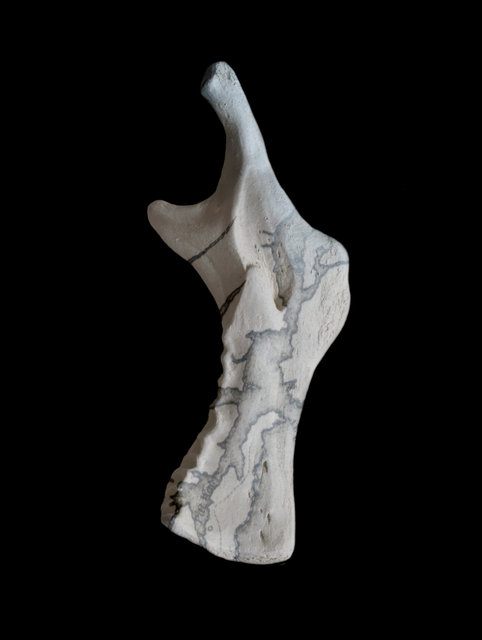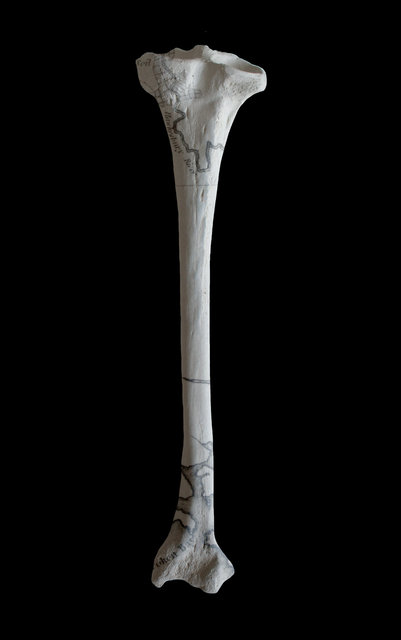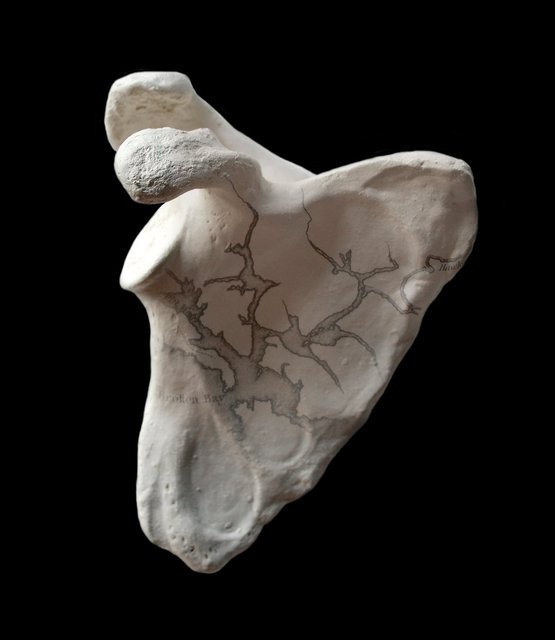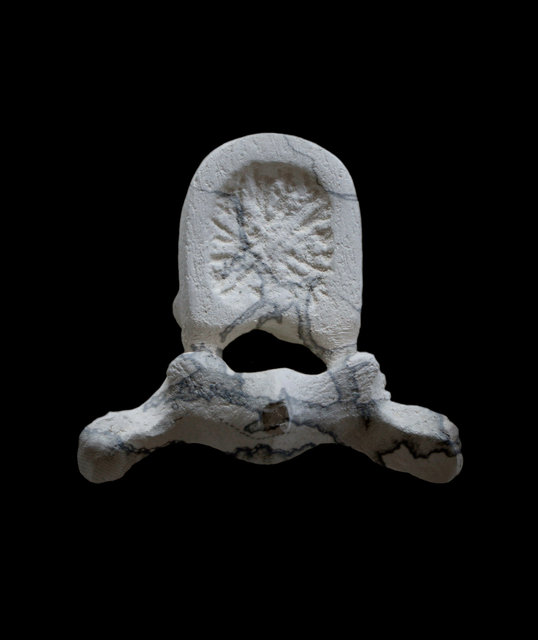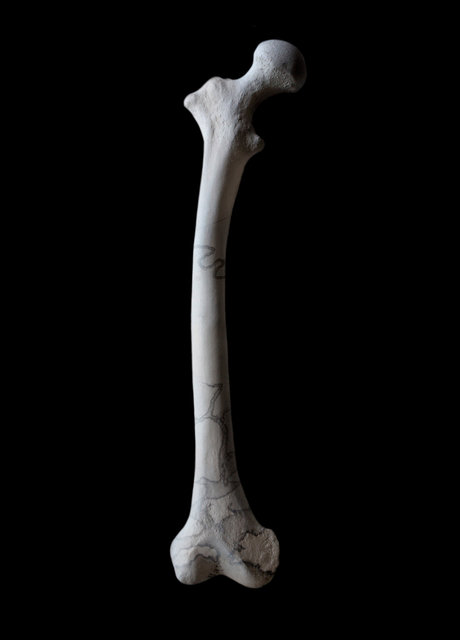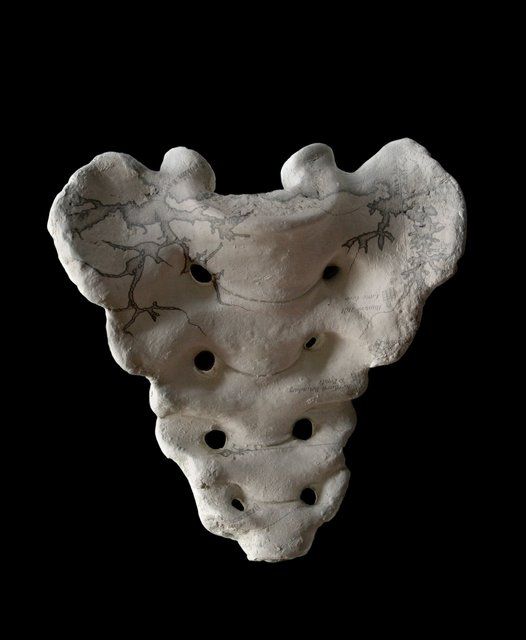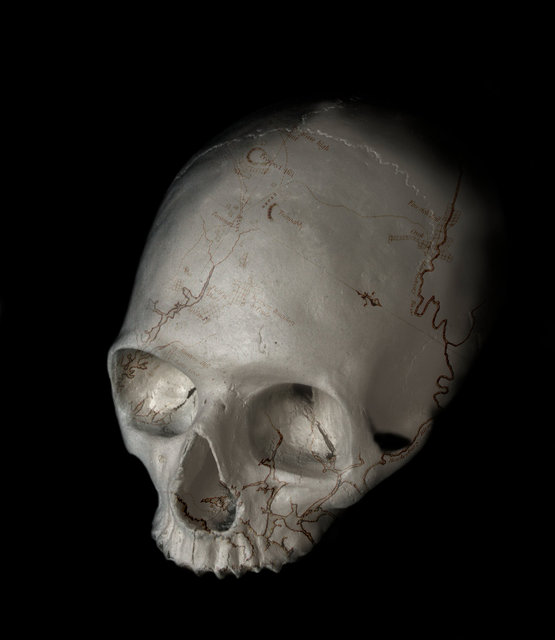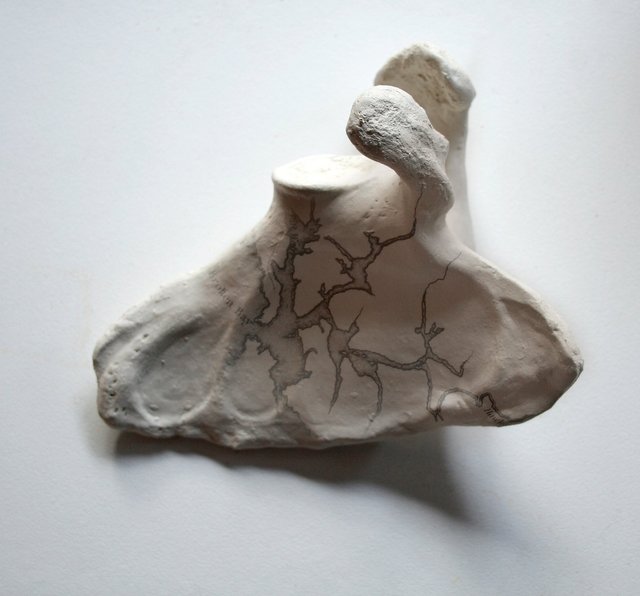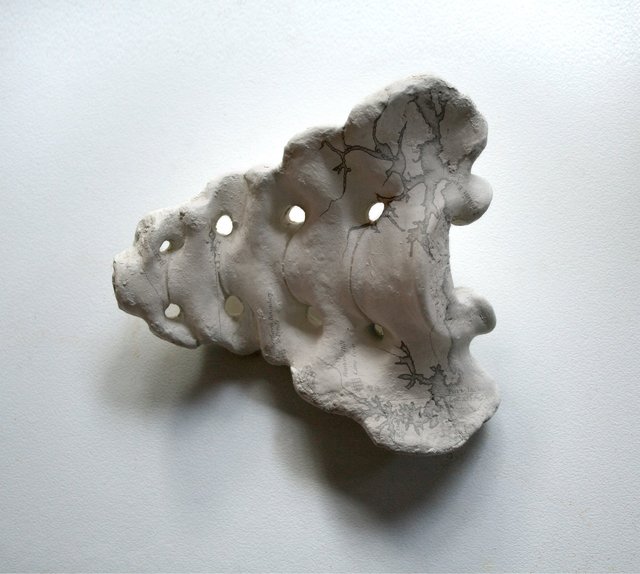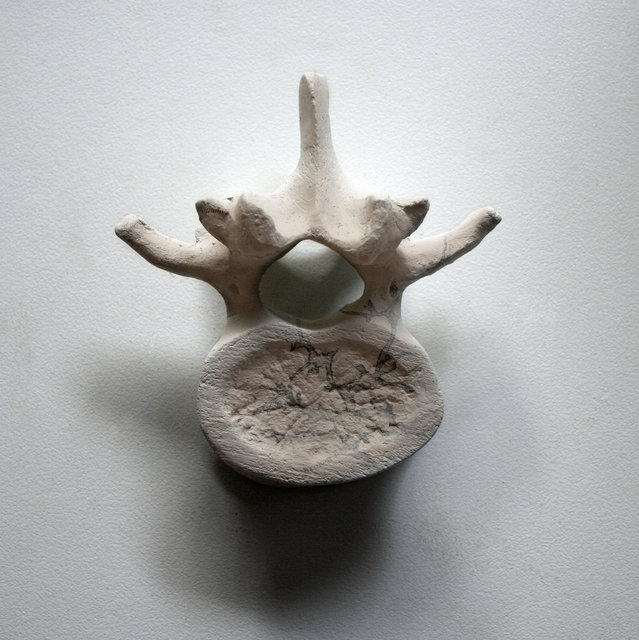Mapping Home
A map of the Hawkesbury River and its catchment has been superimposed over ceramic bones. The river is a metaphor for blood vessels and arteries.
In making this work I was concerned with ideas about loss and connection to place of the First Nation People of Australia.
”I was thinking…
no history written for us when white Europeans start here,
only a few words written.
Should be more than that.”
Bill Neidjie – from his book Kakadu Man
Broken Bay
There’s history here
embedded
in these sheer rock walls
and in these fallen stones
and in this sediment.
Mangroves breathe uneasy silt.
Sit quietly by the river a while
and you can feel it.
Darkinjung
Wannungine
Eora
Guringai [1]
The story sits in the pores of the land
dreaming its ancestors.
Here is the distraught underbelly of the river.
This is where Deerubbin [2] fails to hold
back
her shudder of sediment –
as if the undertow was too great
the undercurrent
too strong.
Sit quietly by the river a while
and you can feel it:
in the dark
Deerubbin
whispers her secrets
relinquishing her cold bones
as hard evidence.
Expert
eye witness.
Jenny Pollak
[1] Aboriginal tribes from the Hawkesbury region and Greater Sydney Basin.
[2] Deerubbin is the Aboriginal name for what is now known as the Hawkesbury River – one of the first places to witness conflict between the Aboriginal custodians and the First Fleet. Deerubbin meets the sea at Broken Bay, just north of Sydney.

